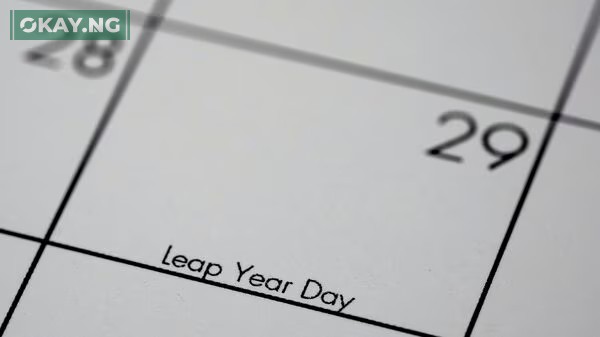Today is Thursday, February 29, 2024, a special day that only happens once every four years. It is called Leap Day, and it is the reason why this year has 366 days instead of the usual 365.
But why do we need an extra day every four years? And what are some interesting facts and trivia about Leap Day?
In this article, we will answer some frequently asked questions about this rare and fascinating phenomenon.
What is Leap Day and why do we need it?
Leap Day is the extra day that is added to the calendar of most years that are divisible by four, such as 2024. The reason why we need it is because the Earth does not complete a full revolution around the Sun in exactly 365 days. It actually takes about 365.242190 days, or 365 days, 5 hours, 48 minutes, and 45 seconds. These extra hours, minutes, and seconds add up over time, and if we did not adjust the calendar, we would lose almost six hours every year. After 100 years, our calendar would be off by about 24 days!
To prevent this from happening, we add an extra day every four years to make up for the lost time. This way, we keep the calendar in sync with the seasons and the astronomical events. When we add an extra day, we call it a leap year, and the day we add is February 29, or Leap Day.
How do we know which years are leap years?
The rule for determining which years are leap years is simple: if the year is divisible by four, it is a leap year, unless it is divisible by 100, then it is not, unless it is divisible by 400, then it is. Confused? Let’s look at some examples:
- The year 2024 is divisible by four, so it is a leap year.
- The year 2100 is divisible by four and by 100, so it is not a leap year.
- The year 2000 is divisible by four, by 100, and by 400, so it is a leap year.
This rule may seem complicated, but it is necessary to make the calendar more accurate. By skipping some leap years, we avoid adding too many extra days over time. In fact, this rule makes the average length of a year 365.2425 days, which is very close to the actual length of a year, 365.242190 days. The difference is only about 26 seconds per year, which means it would take more than 3,000 years for the calendar to be off by one day!
When was the first Leap Day and who invented it?
The concept of adding extra days or months to the calendar to align it with the seasons is not new and has been around for millennia. Some ancient calendars, such as the Hebrew, Chinese, and Buddhist calendars, used leap months, also known as intercalary or interstitial months, to adjust their lunar cycles with the solar year.
However, the first Leap Day as we know it today was introduced by the Roman Emperor Julius Caesar in 46 BCE. He reformed the old Roman calendar, which was based on the lunar cycle and had become very inaccurate and chaotic. He adopted a new calendar that was based on the solar cycle and had 365 days, with an extra day added every four years. He got the idea from the Egyptians, who had been following a similar calendar since the third century BCE. Caesar’s calendar, known as the Julian calendar, was used throughout the Roman Empire and beyond for more than 1,500 years.
How do people celebrate Leap Day?
Leap Day is a rare and special occasion, and some people like to celebrate it in different ways. Some common traditions and customs associated with Leap Day are:
- In some countries, such as Ireland and Britain, Leap Day is also known as Bachelor’s Day or Ladies’ Day, because it is the day when women can propose marriage to men. This tradition dates back to the fifth century, when an Irish nun named St. Bridget complained to St. Patrick that women had to wait too long for men to propose. St. Patrick agreed to grant women one day every four years to pop the question. According to legend, if a man refused a woman’s proposal on Leap Day, he had to pay a fine, such as a kiss, a dress, or a pair of gloves.
- In some places, such as Greece and Italy, getting married on Leap Day is considered unlucky, because it is believed that the marriage will not last or will be unhappy. Some people also avoid starting a new job, moving to a new house, or making important decisions on Leap Day, for fear of bad luck.
- In some cultures, such as France and Russia, Leap Day is associated with humor and pranks, similar to April Fools’ Day. People may play jokes on each other, or create fake news or events. For example, in 1988, a British broadcaster announced that Big Ben, the famous clock tower in London, would be converted to a digital clock. Many people believed the hoax and protested the change.
- Some people celebrate their birthday on Leap Day, which means they only get to celebrate it every four years. These people are known as leaplings, leapers, or leapsters, and they may face some challenges, such as having their birthday ignored or forgotten, or having difficulties with official documents or online forms that do not recognize February 29 as a valid date. However, they may also enjoy some benefits, such as being younger than their peers, or having unique and memorable birthday parties.
Who are some famous people born on Leap Day?
Being born on Leap Day is a rare and remarkable feat, and some people who share this birthday have achieved fame and success in various fields. Here are some examples of famous leaplings:
- Morarji Desai (1896-1995): He was the Prime Minister of India from 1977 to 1979, and the first non-Congress leader to hold this position. He was also a prominent figure in the Indian independence movement and a follower of Mahatma Gandhi.
- Dinah Shore (1916-1994): She was an American singer and actress, who had a successful career in music, television, and film. She was known for her popular songs, such as “Buttons and Bows” and “See the USA in Your Chevrolet”, and for her variety shows, such as The Dinah Shore Show and Dinah!
- Michèle Morgan (1920-2016): She was a French actress, who starred in more than 70 films, both in France and Hollywood. She was known for her roles in films, such as Port of Shadows, La Symphonie Pastorale, and The Fallen Idol. She won the first Cannes Film Festival Award for Best Actress in 1946.
- Tony Robbins (1960-): He is an American author, coach, and motivational speaker, who has written several best-selling books, such as Awaken the Giant Within and Unlimited Power. He is also known for his seminars, workshops, and programs, such as Unleash the Power Within and Date with Destiny, where he teaches people how to achieve personal and professional success.
- Ja Rule (1976-): He is an American rapper, singer, songwriter, and actor, who has sold more than 30 million records worldwide. He is known for his hit songs, such as “Always on Time”, “I’m Real”, and “Wonderful”, and for his collaborations with other artists, such as Jennifer Lopez, Ashanti, and R. Kelly. He is also known for his roles in films, such as The Fast and the Furious, Scary Movie 3, and Assault on Precinct 13.
What are some fun facts and trivia about Leap Day?
Leap Day is a fascinating and curious phenomenon, and there are many fun facts and trivia about it. Here are some examples:
- The chances of being born on Leap Day are about 1 in 1,461, which means there are about 5 million leaplings in the world.
- The official record for the most children born in one family on consecutive Leap Days is held by the Henriksen family from Norway. Karin Henriksen gave birth to three children on February 29 in 1960, 1964, and 1968, respectively.
- The town of Anthony, which straddles the border between Texas and New Mexico in the United States, calls itself the “Leap Year Capital of the World”. It hosts a festival every Leap Year that attracts hundreds of leaplings from around the world.
- The frog is a symbol of Leap Day, because it is a leaping animal and because it is associated with the month of February. Some people wear frog-themed accessories or decorations on Leap Day, or exchange frog-related gifts or cards.
- In Ireland, Leap Day is also known as St. Oswald’s Day, in honor of an Anglo-Saxon king and saint who died on February 29, 992. Some Irish people celebrate this day by eating pancakes or other round foods, which represent the Sun and the cycle of the seasons.









